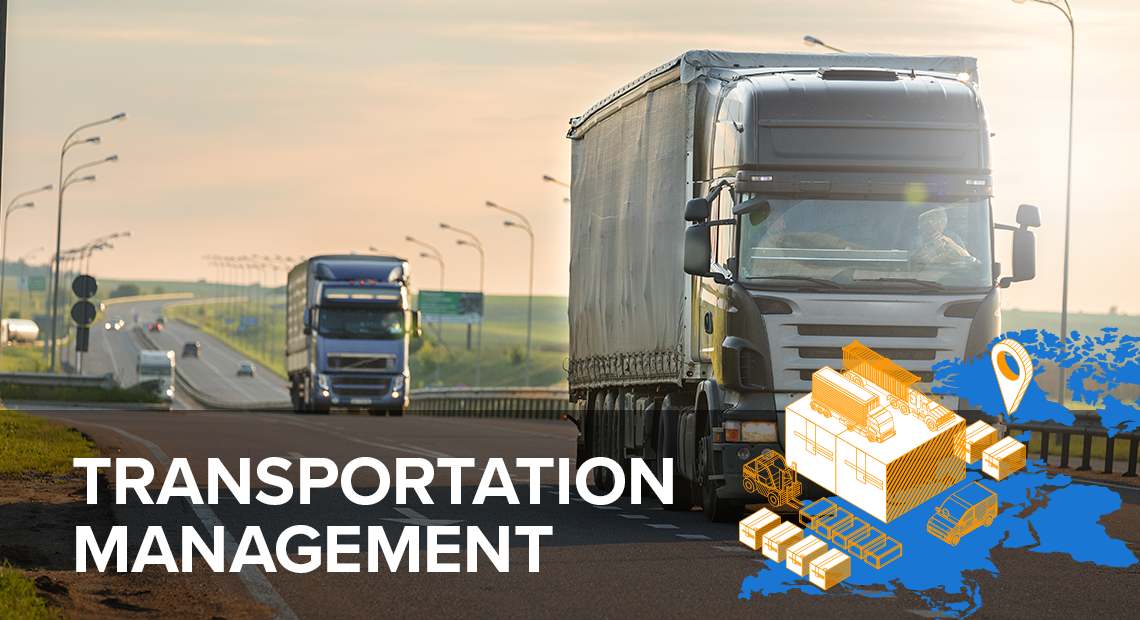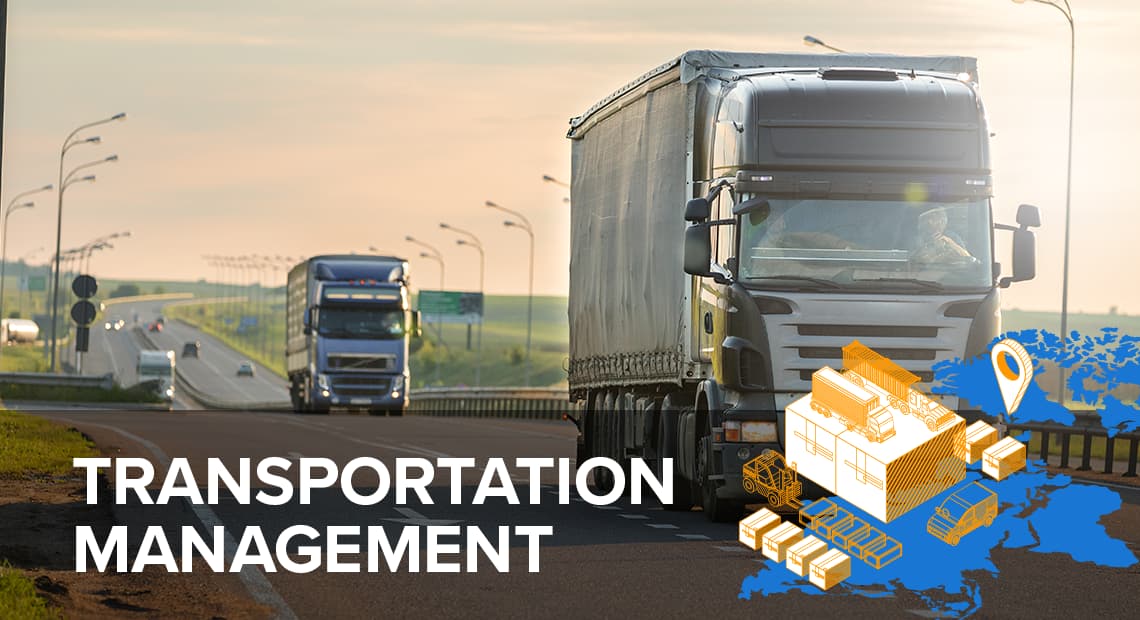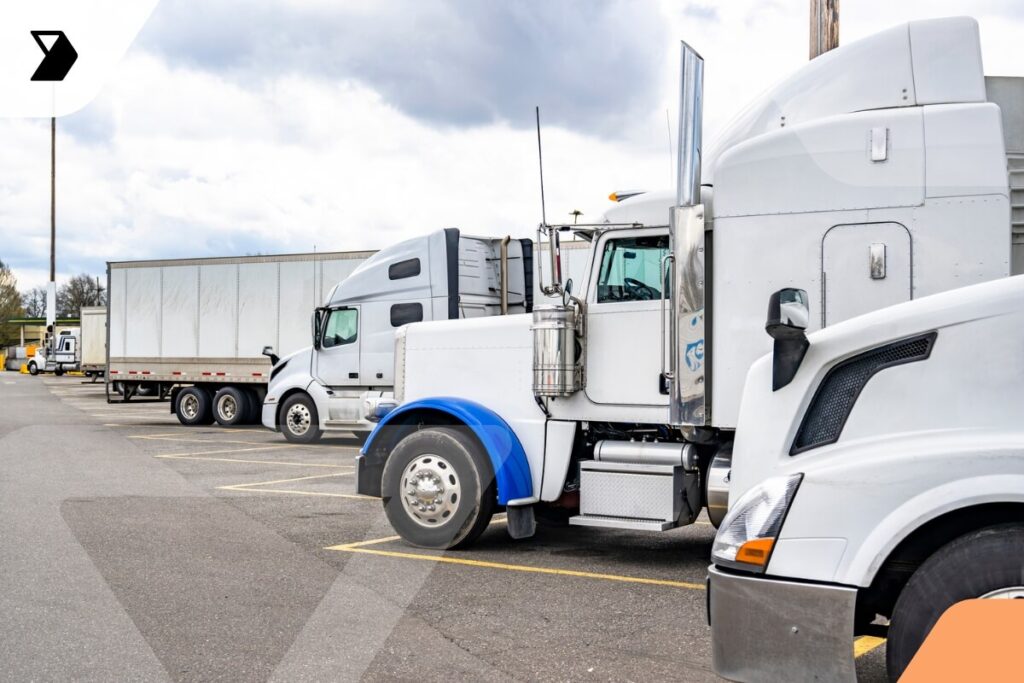What Is Traffic Management? a Definition and Guide
I recently had a lighthearted debate with a logistics industry colleague of mine.
Ready to transform your supply chain?

Our lunch-hour litigation revolved around the difference between “traffic management” and “transportation management.”
March 19, 2020

It began when my friend used the term traffic management when he meant to use transportation management. I corrected him.
He said the difference is simply a “you say potato, I say po-tah-to” thing.
No, I assured him. This is not the case. The terms mean different things.
Then I explained instead that the difference between traffic management and transportation management is more like the difference between sweet potato fries and potato soup. Or distant cousins.
These Terms Are Related. But they Don’t Really Look Alike.
After our debate, I knew someone should dispel the confusion about these terms. Thus today we’ll define these terms and differentiate them. You’ll find out:
- What is traffic management?
- What is transportation management?
- How do they work?
- What are some best practices for each?
The Art of War
Before we dive in, let me say why clarifying these terms is important.
I’m not the first person to equate Sun Tzu’s famous book The Art of War to the context of business. But if you’re in the logistics industry, you know it’s a battle every day.
Logistics is a zero-sum game. You win a load of freight. Or you lose a load.
Sure, there are gray areas to freight. Sometimes a driver delivers a load smoothly. Sometimes there’s chaos. And there are some situations in between.
In The Art of War, Sun Tzu famously wrote:
“If you know the enemy and know yourself, you need not fear the result of a hundred battles.
“If you know yourself but not the enemy, for every victory gained you will also suffer a defeat.
“When you know neither the enemy nor yourself, you will succumb in every battle.”
What happens when we translate Sun Tzu into the language of logistics? First of all, who, or what, is our enemy? To be sure, inefficiency is the enemy.
Thus, being clear about our terminology can dispel the fog of war. Or to put it another way, knowledge is power.
Logistics and Management
Now let’s talk about similarities.
Here’s what the terms traffic management and transportation management have in common:
- Both are terms people use in the logistics industry.
- Both terms involve oversight or control.
So, when you watch traffic and trucks pass by on a busy highway? You’re seeing traffic management and transportation management in motion.
Basically, traffic management is more infrastructure related. It involves logistics planning and civil engineering. But it also has to do with local, state, and federal departments of transportation (DOTs) and regional transit authorities (RTAs). Traffic management is where the rubber meets the road for all types of transport.
Traffic Management Is All Around Us.
It’s easiest to see traffic management in these places.
- Road intersections
- Traffic circles
- Bicycle lanes
- Railroad crossings
- Public transportation pathways
- Highway interchanges
What’s the primary goal of traffic managers? Safe, smooth, and bottleneck-free travel for all.
For example, there are areas of concern specifically for highway traffic management planning and implementation. These include but aren’t limited to:
- traffic patterns
- construction zones
- interchanges
- speed limits
- toll booths
- carpool lanes
- peak traffic flow
- emergency response logistics
In addition to these areas of focus regarding over-the-road travel, traffic management covers similar concerns. These concerns relate to sea and river traffic. Also affected are air traffic, public transit, and rail transportation.
To highlight, the definition on the Department of Transportation website is:
“The DOT is the federal government’s lead agency for planning and support of the nation’s land-, air-, and sea-based travel systems. DOT develops, implements, and enforces federal regulations governing use of America’s roads and highways, airports and air corridors, railways, and seaports.”
The Role of Tech in Traffic Management
Tech plays an increasingly huge role in traffic management. ATMS (or Active Traffic Management Systems) track the flow of traffic, churning out data for analysis. This data aids traffic management teams. They use it to uncover inefficiencies. Also, they isolate key performance indicators (KPIs). And they help their overall decision-making process.
Also, as we move toward a future of automated and self-driving vehicles, traffic management and infrastructure decisions will become a major area of focus for DOTs and RTAs. One specific area where traffic management and tech will collide is with lane striping, which plays a vital role currently in the way automated driving tech “sees” the road.
Indeed, right now lane striping limits the future of automated driving systems (ADS). To illustrate, in 2013 GM officials testified to Congress regarding ADS: “One of the key highway needs is to provide—at a minimum—clearly marked lanes and shoulders.” With this in mind, consider the massive importance of simple lane markings!
In summary, that should give you a clear picture of the definition of traffic management. On the other hand, let’s transition now to transportation management.
Transportation Management: A Logistics Tech Mainstay
If you’re in logistics, your company most likely has a TMS (transportation management system) in place. The technological advancements of TMS have revolutionized the logistics industry.
TMS is a software platform that logistics companies use in various ways to organize their data. Further, TMS software programs allow operations teams to efficiently perform critical tasks. These include:
- schedule loads
- organize carriers
- find ideal routes
Some logistics companies have even made their TMS mobile.
A good transportation management software will streamline the workflow of logistics professionals. A good TMS also acts like the hub of internal operations. To put it another way, a good TMS does a lot of heavy lifting. But a TMS’s greatest asset is its ability to integrate your entire operation.
In essence, transportation management systems are the starting point for companies to streamline their operations using technology. Imagine a system that aligns drivers, operations, back office, and management simultaneously. That’s what a good TMS does.
At the present time, you could even consider some TMS integrations groundbreaking. To be sure, certain developments introduced by the tech industry save time and make everyone’s life easier in the logistics industry.
Imaging Software and the Paperless Office
Without a doubt, advancements made in mobile imaging are the biggest time saver we’ve seen thus far. Business is evolving toward a paperless office. Mobile imaging software is at the forefront of this evolution.
New technology allows a driver’s load paperwork to be scanned, uploaded, and saved to your TMS. This eliminates countless bottlenecks from every single load of freight.
Overall, the biggest game changer in logistics tech might be single-click customer invoicing.
Previously, the process of invoicing a customer took days, if not weeks. Now, single-click invoicing allows companies to invoice a customer just minutes, if not seconds, after a load delivers. As you can imagine, this advance has removed large blocks of wasted time from operational workflows.
Inefficiency Is the Enemy!
As we’ve seen, traffic management and transportation management are different terms. Then again, both terms undoubtedly form pillars that support the logistics industry.
Without effective traffic management, even the best transportation management system is inefficient. And without the best TMS, even effective traffic management won’t help you avoid inefficiencies.
Efficiency is the core element that binds these two terms. In a world where time is money, efficiency and a commitment to continuous improvement drive progress. If Sun Tzu were in the logistics industry, I think he’d consider inefficiency to be the enemy.
Thus, let’s keep our eyes open and look for ways to improve efficiency. That will help us fight the daily workflow battles. Then we can defeat our inefficient enemy, and win the war.
This post was written by Brian Deines. Brian believes that every day is a referendum on a brand’s relevance, and he’s excited to bring that kind of thinking to the world of modern manufacturing and logistics. He deploys a full-stack of business development, sales, and marketing tools built through years of work in the logistics, packaging, and tier-1 part supply industries serving a customer base comprised of Fortune 1000 OEMs.
Continue reading
Ready to transform your supply chain?
Increase efficiency and productivity. Say goodbye to delays, handwriting errors, and time-intensive manual data entry.



